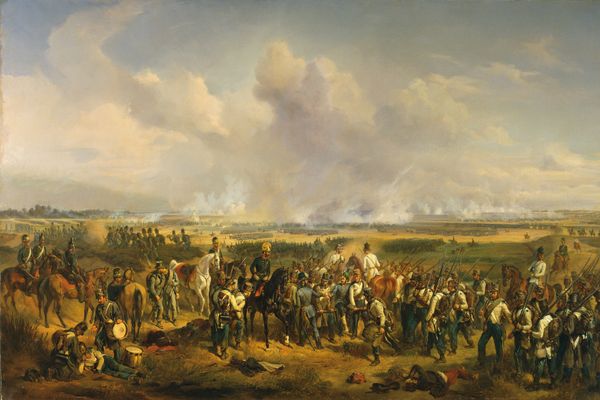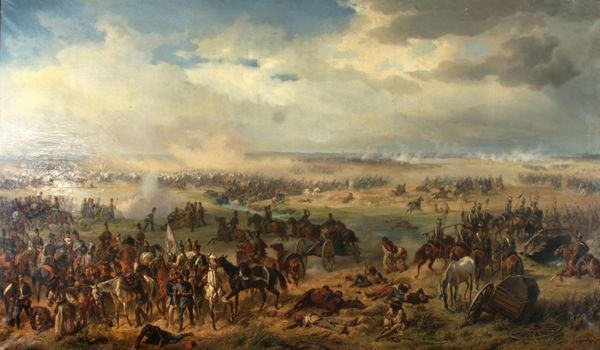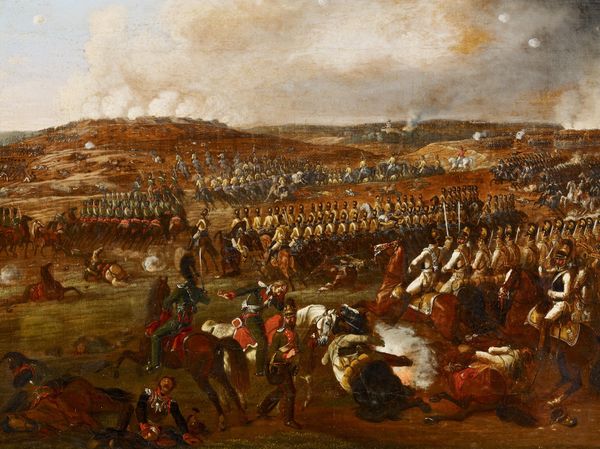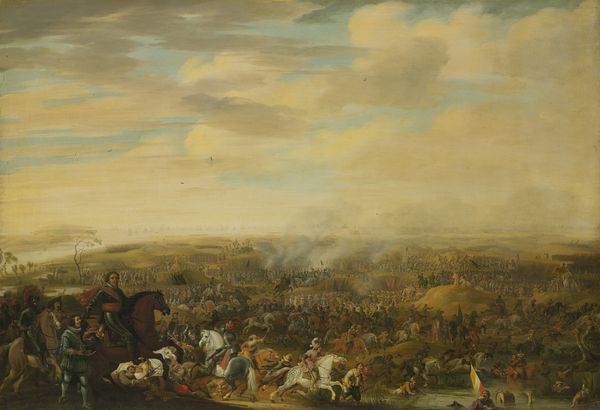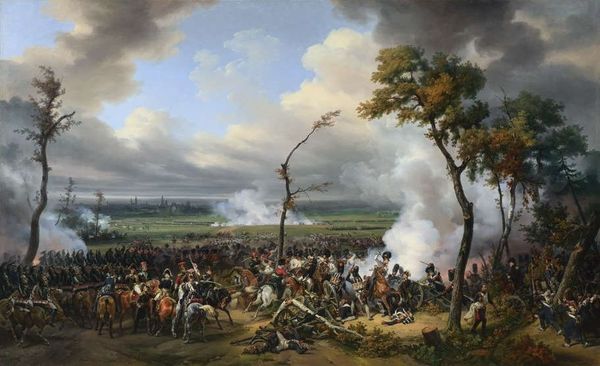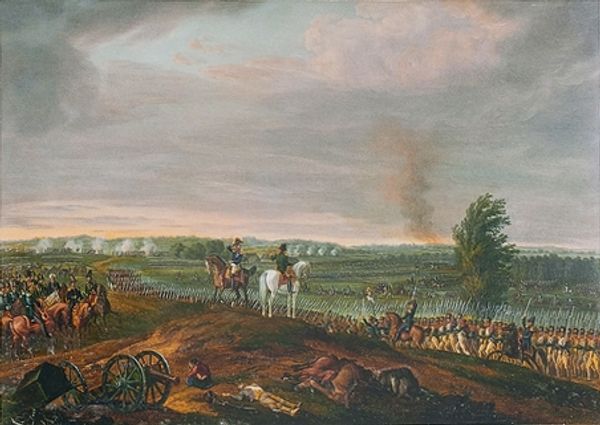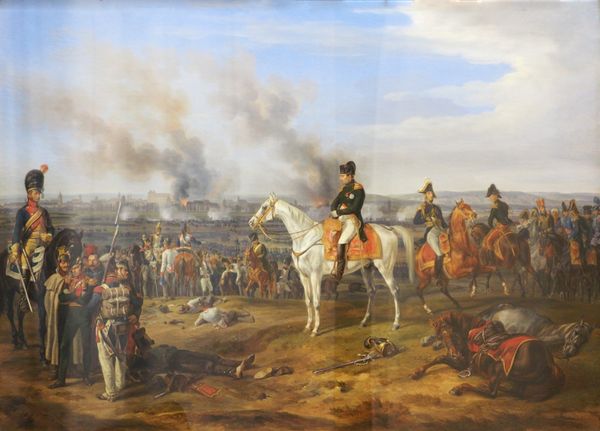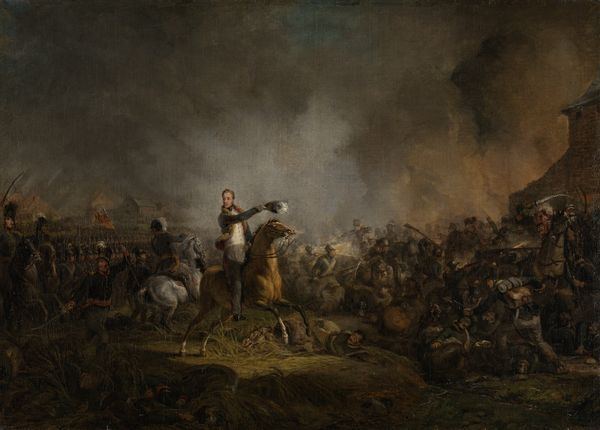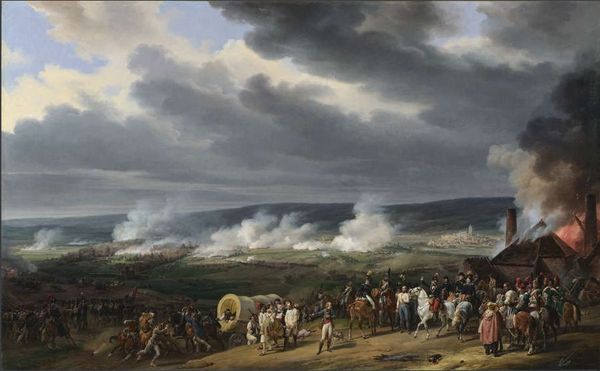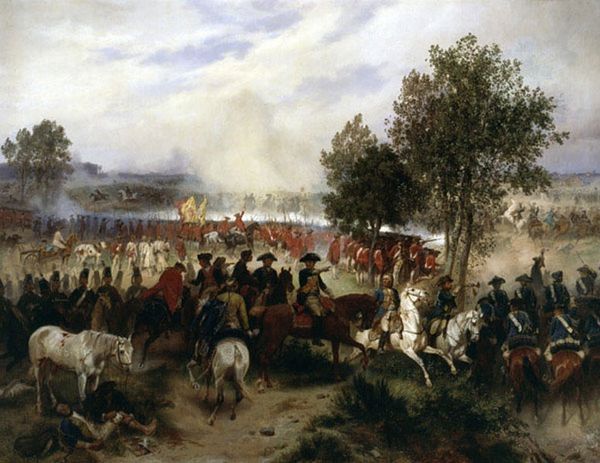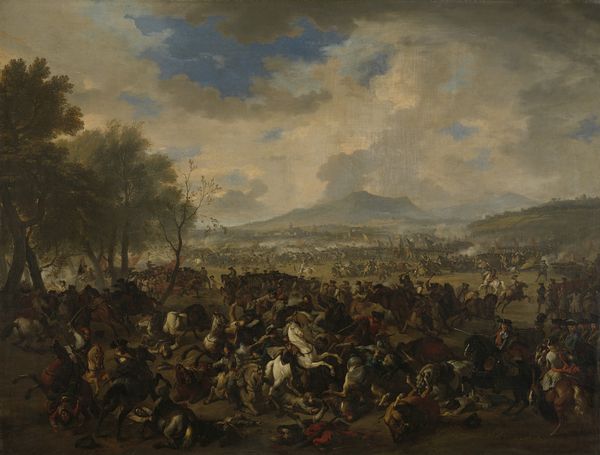
Field Marshal Radetzky and his staff at the Battle of Novara on March 23, 1849 1855
0:00
0:00
Copyright: Public domain
Editor: Here we have "Field Marshal Radetzky and his staff at the Battle of Novara on March 23, 1849," an oil painting completed by Albrecht Adam in 1855. There's a definite Baroque feel. What strikes me is the sheer density of figures; the eye struggles to find a focal point amid the chaos. What do you make of it? Curator: Note how Adam uses the composition to direct our gaze despite the multitude of figures. Consider the light; it's not uniformly distributed. See how it catches the white horses, drawing our eyes toward the central group, almost a pyramidal structure despite the linear scattering of figures in depth? Editor: I see what you mean; the lighter horses do create a sort of visual anchor. And now that I consider the colour choices there seems to be an interesting contrast of lighter elements around this pyramid, versus muted, darker tones in the far- and foreground. Curator: Precisely. Also observe the application of paint, thick impasto in areas, versus thin glazes. Ask yourself, does that influence our reading? Note also the textural differences achieved by varied brushwork to denote spatial qualities across the flat plane. Editor: So the textures give it depth and also serve as a counterpoint? How can you know which features and strategies used by the artist are the correct way to observe artwork? Curator: Ah, well put, and note there’s always something overlooked by interpretation, regardless how careful. What seems self-evident from brushstroke or composition can be missed, as the artwork remains richer than all readings about it. Editor: Thank you, I understand that better now. Thinking about those contrasts definitely enriches my perception, considering them rather than trying to fix the piece down to any single definitive argument. Curator: Indeed, each of those contribute to its complexity. The materiality speaks, even if not about definitive single elements; just note the conversation across and between art and interpretation is continuous.
Comments
No comments
Be the first to comment and join the conversation on the ultimate creative platform.

